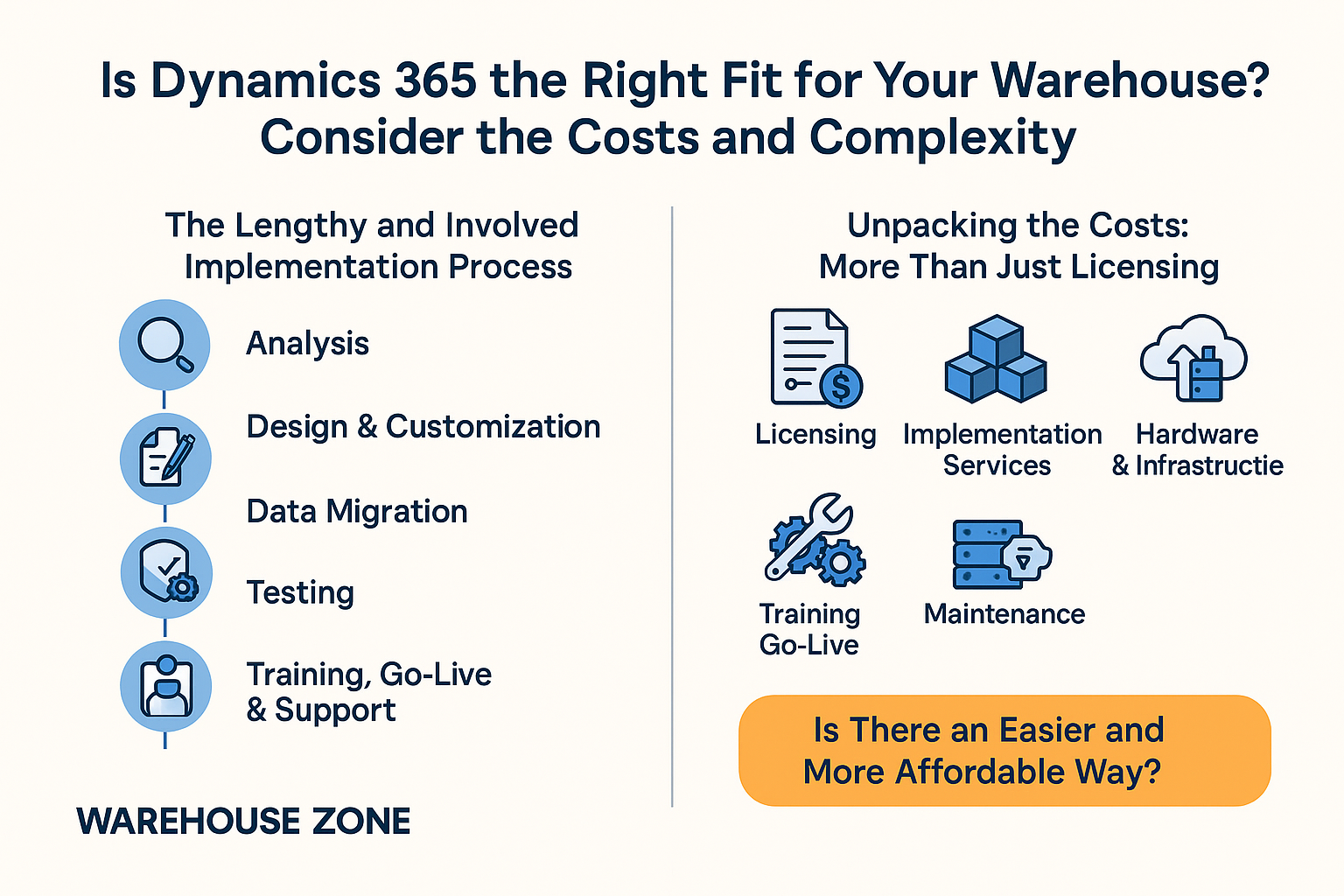Is Dynamics 365 the Right Fit for Your Warehouse? Consider the Costs and Complexity
Microsoft Dynamics 365 is a well-recognised name in the world of enterprise resource planning (ERP) and warehouse management. While it boasts a comprehensive suite of features, businesses, especially small to medium-sized enterprises, need to carefully consider the significant costs and intricate steps involved in implementing its warehouse management system before assuming it's the ideal solution.
The Lengthy and Involved Implementation Process
Implementing the Warehouse Management module within Dynamics 365 is far from a quick and easy process. It typically involves a multi-phase approach that can stretch over several months, demanding substantial time and resources from your team. The journey often begins with an in-depth analysis of your existing warehouse operations to identify specific needs and goals – a crucial step but one that requires significant effort and expertise.
Following the analysis, a detailed design phase is necessary to map out how Dynamics 365 will fit into your unique workflows, often requiring customisation to bridge the gaps between the standard system and your specific requirements. This is where the complexity truly begins, as configuring and customising the system involves intricate steps like setting up warehouse workflows for receiving, put-away, picking, packing, and shipping. Data migration from your existing systems is another critical and potentially challenging phase, demanding careful planning and execution to ensure accuracy and avoid disruptions.
The process doesn't end there. Rigorous testing, including user acceptance testing, is essential to ensure the system functions as expected and meets all your business requirements. Finally, comprehensive training for your warehouse staff is crucial, requiring dedicated time and resources to get everyone up to speed on the new system. Even after the go-live, ongoing support and adjustments are often needed to fine-tune the system and address any unforeseen issues.

Unpacking the Costs: More Than Just Licensing
The cost of implementing Dynamics 365 for warehouse management can be substantial and extends far beyond the initial licensing fees. While Microsoft offers various licensing options for their Supply Chain Management module, including different tiers like Premium, the per-user monthly costs can quickly add up, especially for businesses with multiple warehouse staff.
However, the licensing cost is just the tip of the iceberg. Implementing Dynamics 365 often necessitates significant investment in implementation services, which can range from setting up and configuring the software to complex customisations and integrations with your existing ERP or other business systems. Data migration, a crucial step, also comes with its own set of costs, potentially requiring data cleaning and transformation services. Depending on your chosen deployment method (cloud-based or on-premise), you might also need to factor in hardware costs for servers and infrastructure, particularly for on-premise solutions.
Furthermore, the cost of training your employees on the new system is a significant consideration, as is the ongoing cost of system maintenance, updates, and technical support. These recurring expenses can make the total cost of ownership for Dynamics 365's warehouse management system a considerable investment for any business.
Is There an Easier and More Affordable Way?
While Dynamics 365 offers a robust set of features, the intricate implementation process and the potentially high costs involved might lead you to question if it's the most practical solution for your specific needs. For businesses seeking a more streamlined approach to warehouse management without the complexity and significant financial outlay often associated with systems like Dynamics 365, exploring alternative solutions designed with simplicity and affordability in mind could be a more strategic move.
Before committing to a solution that demands extensive resources and a lengthy implementation timeline, it's wise to consider if a more user-friendly and cost-effective warehouse management system could provide the core functionalities you need to optimise your warehouse operations without the overwhelming complexity and expense.

